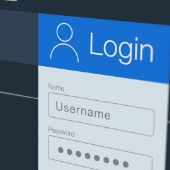 Elevate your online security by mastering the art of strong password creation. The National Institute of Standards and Technology (NIST) has provided valuable insights to help users create and maintain secure passwords. By following these guidelines, you can take a proactive approach to protecting your digital assets.
Elevate your online security by mastering the art of strong password creation. The National Institute of Standards and Technology (NIST) has provided valuable insights to help users create and maintain secure passwords. By following these guidelines, you can take a proactive approach to protecting your digital assets.
The evolution of password guidelines
Initially, NIST emphasized the complexity of passwords, encouraging a mix of uppercase letters, lowercase letters, numbers, and special characters. While this approach aimed to enhance security, it often led to frustration among users, especially when they forget their password. This ultimately resulted in inefficient password practices.
Recognizing these limitations, NIST shifted its focus toward length. Longer passwords, even if simpler, prove more effective against brute force attacks and are easier for users to remember. At one point, it was common for systems to mandate frequent password changes to maintain security. However, this often led to weaker passwords, as users would resort to minor variations of their previous passwords.
NIST has since acknowledged the potential drawbacks of this approach and reformed its guidelines accordingly.
The 2024 NIST guidelines: A new era
The latest NIST guidelines prioritize user-friendly security practices. These guidelines focus on creating a balance between security and usability, recognizing that overly complex requirements can lead to user frustration and ultimately weaken security.
1. Prioritize length over complexity
Longer passwords are inherently more secure than complex ones, as they increase the number of possible combinations for attackers to guess. Aim for a minimum length of 12 to 16 characters, and consider using passphrases instead of passwords. Passphrases like “Ilovetakinglongwalks” are easier to remember and type, yet much more challenging for attackers to crack.
2. Eliminate mandatory password expiration
As stated earlier, frequent password changes often lead to weaker passwords. NIST now recommends eliminating the practice of mandatory password expiration in favor of changing passwords only when necessary, such as when a data breach occurs or if there is suspicion of compromise.
3. Embrace diverse character sets
While complexity is no longer the main focus, using a variety of characters can still enhance password strength. Consider using ASCII and Unicode characters to diversify your passwords. For example, “Løve4ThëSunnyD@ys!” is more secure than “Love4TheSunnyDays!” as it includes special characters and uses both uppercase and lowercase letters.
4. Avoid password hints
Password hints, while convenient, can pose a security risk if they’re easily guessed or intercepted. Instead, use alternative strategies such as multifactor authentication or security questions that aren’t easily answered by those not familiar with you.
5. Leverage password managers
Password managers offer numerous advantages, from storing complex passwords to generating them for you. These tools also often come with features such as password sharing and auto-fill, making it easier to practice good password hygiene.
Enhancing your online security
Understanding and adhering to strong password practices is crucial in safeguarding your digital identity. By adopting these updated NIST guidelines, you can enhance your online security and reduce the risk of cyberthreats. Remember, a strong password is your first line of defense — make it count!
If you want more tips on how to improve your cybersecurity, call our experts today.